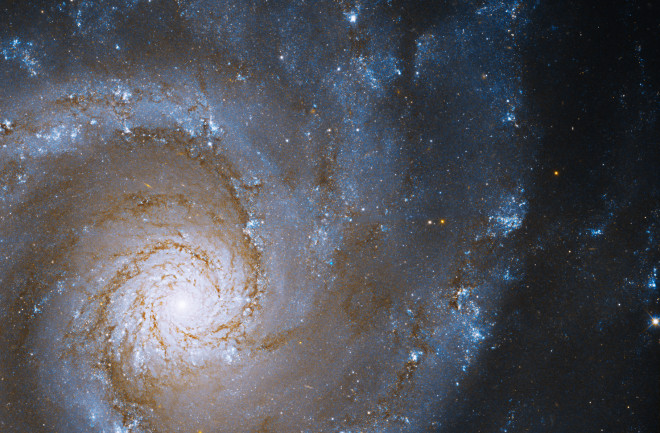Why is the observable universe so big? Here's why the universe’s size isn’t constrained by the speed of light.
Our universe is about 13.8 billion years old, and the observable bubble of that cosmos has a diameter of about 93 billion light-years across. And we all know the famous maxim from Albert Einstein’s special theory of relativity: nothing can travel faster than light.
Taken together, this presents us with a perplexing riddle about the nature of the cosmos itself: How can the universe get so mind-bogglingly big in such a short amount of time?
What Does "Faster Than Light" Mean?
There are two ways to answer this question. The two ways are perfectly equivalent mathematically, but one or the other might make more sense to you.
Einstein’s Special Theory of Relativity
The first way is to point out that Einstein’s special theory of relativity is a local theory of physics. It tells you that if a rocket were to blast off in front of your face, you will never, ever record its speed as going faster than light.
The very concept of “speed” is only something that you can measure nearby your current position. Special relativity is absolutely silent about the behavior of objects on the far side of the universe – concepts like the speed of light limit simply don’t apply to them, because they’re too far away and special relativity no longer applies.
Einstein’s Theory of General Relativity
To grapple with distant objects, you have to employ a broader, more general theory, like Einstein's theory of general relativity, which describes how gravity influences the fabric of space-time.
In other words, the most distant galaxies can apparently go faster than the speed of light because, essentially, the universe doesn’t have to care about the speed of light.
An Expanding Universe
And it’s in general relativity that we get our second way to solve the riddle. According to this model, which is how we currently understand the cosmos, we live in an expanding universe. Every day, our cosmos gets bigger and bigger, with the average distance between galaxies always getting larger.
So far, so good, right? But that expansion isn’t caused by galaxies moving in the universe, but rather the space between the galaxies expanding.
If you were to attach an accelerometer to every galaxy, they would register zero movements (except for small, local motions here and there.)
Locally, no galaxy is moving. But the space between them is. So there are no restrictions here based on the speed of light because they’re literally not moving. There’s no limit to how quickly space can expand (because “expanding” isn’t a motion as far as relativity is concerned) and so the universe can grow as quickly as it pleases.
How Big Is the Observable Universe?
Essentially, the universe is so big because it can expand faster than light. In fact, it’s doing so today. We measure the present-day expansion rate of the universe with something called the Hubble constant, which is around 68 kilometers per second per megaparsec.
That means for every megaparsec in distance you get away from the Milky Way, the universe’s expansion speed will increase by 68 km/s. A galaxy two megaparsecs away appears to recede at 136 km/s, a galaxy ten megaparsecs away will recede at 680 km/s, and so on.
The Hubble constant guarantees that once you reach a certain distance — about 13 billion light-years (a distance known as the Hubble radius) — galaxies will appear to move away from us faster than light.
The same would be true if you and I were to stand on opposite ends of a stretchy rubber band. As long as the rubber band didn’t break, as long as the stretching maintained a constant speed, at some point we would appear to be moving away from each other faster than light. (And yet, once again to emphasize this point, if we were to draw an “X” at our feet, we wouldn’t have moved away from those spots).
Distant Galaxies
The light from galaxies beyond the Hubble radius was released billions of years ago and is only just now reaching the Earth. We calculate where these galaxies are right now based on our understanding of cosmology, and that’s how we’re able to estimate the size of the universe. The fact that they appeared to move faster than light means that any light that they send now will never reach us — because that light will not be able to overcome the expansion of the universe.
Since most of the universe is beyond the Hubble radius, all those galaxies are forever out of reach. As time goes on, those galaxies will, one by one, disappear entirely from view. Not through any cheating of the laws of physics, but through simple (and inevitable) stretching.
- Karlston, flash48 and alf9872000
-

 3
3



Recommended Comments
There are no comments to display.
Join the conversation
You can post now and register later. If you have an account, sign in now to post with your account.
Note: Your post will require moderator approval before it will be visible.